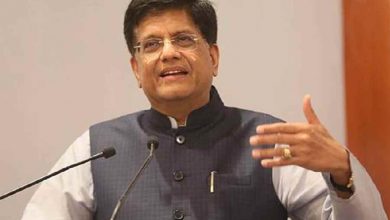World Bank slashes India’s GDP to 6.3%

Washington, Apr 04: The World Bank on Tuesday slashed India’s GDP to 6.3 per cent as against an estimate of 6.6 per cent in fiscal 2023-24, citing high borrowing costs and slower income growth as among reasons behind the downgrade. “In India, South Asia’s largest economy, high borrowing costs and slower income growth are expected to dampen consumption and lower growth to 6.3 per cent in FY 2023/24,” the World Bank said in a report for South Asia released on Tuesday ahead of the annual spring meeting of the International Monetary Fund and the World Bank. “The main reason for the downgrade of the forecast is weak consumption, and also tightening of fiscal policies, and especially tightening of the current expenditure by the government. Domestic consumption is held back by the tighter fiscal situation,” Hans Timmer, World Bank Chief Economist for South Asia, told reporters during a news conference here. In general, the situation in India is better than in many of the other countries in South Asia, he noted. The situation in the financial sector is healthier than seen in many of the other countries. Observing that the banks in India are in good shape and they have improved after the pandemic, Timmer said that there is healthy credit supply in the economy and private investment is relatively strong compared to recent years. The main challenge in India, the World Bank economist said, is that only a small part of the potential in India is being utilised. “In India female labour force participation has dropped below 20 per cent. There is also no sign that the informal sector is becoming more productive or becoming smaller. So, there is still a huge structural agenda in India to make growth more inclusive to increase participation,” he said. “There’s also still a reform agenda needed to increase private investment from abroad, especially in the services sector,” he said, adding that there is also the challenge of climate change in India to prepare for the changing climate and to play its role in mitigating global emissions. “But in the short run, (India has a) healthier economy than in the rest of South Asia,” Timmer said. All countries in the region except Bhutan have downgraded their forecasts, the World Bank said in its report.
“South Asia’s economies have been scarred by a combination of extreme shocks over the past three years, and the recovery remains incomplete,” said Martin Raiser, World Bank Vice President for South Asia.








